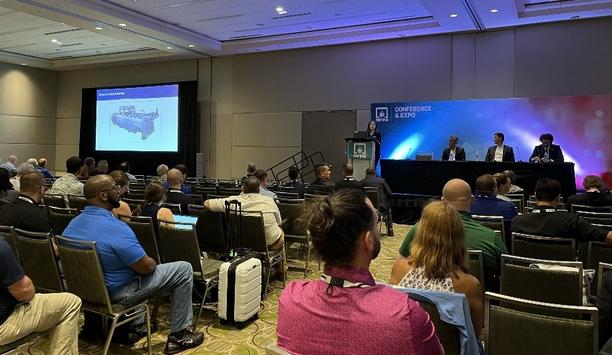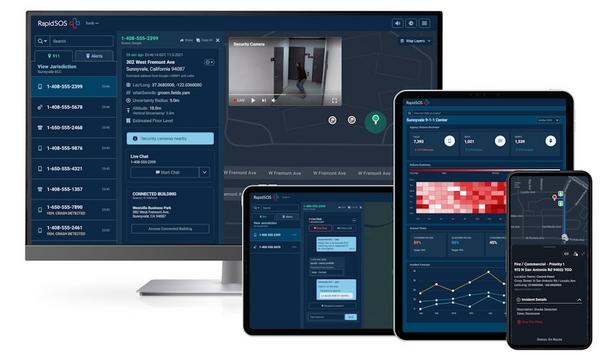Global warming is often mentioned as a factor in the accelerating frequency and intensity of wildfires. However, there are other consequences of global warming that impact the fire service, including new hazards and medical emergencies, emerging training challenges, population migration, and technology developments.
Climate change is often discussed as a future event. However, the impact of wildfires is just the most obvious example of how climate change is already impacting the world, and fire and emergency personnel will be called on to mitigate the effects.
Creating action plan
The most obvious and extreme impact of global warming can be seen in the increase of frequency and intensity of wildfires. Hotter and drier weather is extending the wildfire season (maybe to become year-round?). Higher temperatures, low humidity, less rainfall, and high wind increase the likelihood of wildfires.
Higher temperatures, low humidity, less rainfall, and high wind increase the likelihood of wildfires
Particularly of concern are the increased risks at the wildland urban interface (WUI), where lost property and lives are more likely. The U.S. Fire Administration provides a guide to assess a community’s wildfire risks and to help departments create an action plan. The same weather that promotes wildfires – high temperatures combined with low humidity, low rainfall, and higher winds – is also of concern at the wildland-urban interface. Sustained periods of drought – or even short (flash) periods – can drastically increase the risk of WUI fires.
Emergency response scenarios
Beyond heightened fire risks, departments face a long list of other emergency response scenarios that are being complicated or accelerated by global warming. Extreme heat and cold can result in more frequent Emergency Management System (EMS) calls. Severe storms and flooding require new levels of disaster response. At the other extreme, drought can impact water supplies.
More frequent emergency declarations and longer recovery phases are additional consequences of global warming. Aging infrastructure may be at risk to the impact of climate change; for example, an aging stormwater drainage system may be overwhelmed and cause flooding. Some older buildings are not built to withstand heavy amounts of snow, and extreme heat and cold may prompt residents to use window air conditioners and/or portable heaters in an unsafe way.
Hydrogen energy products
Other possible hazards include recycling centers or facilities that produce or store biofuel
Health, safety, and behavioral impacts for fire and EMS personnel are an additional issue, given the increase in demands on emergency personnel working in more extreme conditions.
Green technologies come with new fire hazards to be addressed, exemplified by the flammability dangers of lithium-ion batteries. Other issues include electric vehicle and charging station fires, solar photovoltaic system fires, and structure fire and/or collapse issues associated with the green building exterior and interior materials and finishes. Other possible hazards include recycling centers or facilities that produce or store biofuel, geothermal, solar, or hydrogen energy products.
Unmanned aircraft system
Evolving risks of climate change have also led to the creation of new technologies to respond to severe weather incidents, including high-water apparatus, battery-operated tools, photovoltaic power systems, hand-held GPS devices, and unmanned aircraft system. Developing skills to operate these new tools will help departments be prepared for the consequences of climate change. Departments should make sure their equipment meets the response needs in the era of climate change.
Additional skills might include water rescue or response to incidents related to green energy technology
In addition, fire station building, and mechanical issues should be addressed, including redundant power supply. Fire and emergency personnel must be trained to deal with the new challenges driven by climate change in the fire and rescue arena. Additional skills might include water rescue or response to incidents related to green energy technology. Especially if there are sustained periods of severe weather, storms, and flooding, the ability of personnel to respond will be severely taxed.
Additional risk assessments
At the very least, the impact of global warming points to a need for communities to perform additional risk assessments viewed through the lens of climate change. Changing climate patterns will also likely cause shifts in population, with citizens tending to migrate away from areas most impacted by climate change and into areas where resulting weather events are less severe. In this regard, even areas not directly impacted by climate change may face extreme shifts (and increases) in resource needs for fire and emergency response.
In areas that are losing residents because of climate changes, fire and emergency departments will need to respond to changes in available resources tied to the diminishing tax base. Personnel shortages are already impacting many fire and emergency departments, and even more, manpower may be needed in the wake of climate change. New recruitment strategies and outreach messages are needed to meet personnel requirements amid the shifting demographics.







































